BBC: The italian region that doesnt exist
(BBC) Molise, a small region in south-eastern Italy, is famous for one thing: it doesn’t exist.
Well, technically, it does exist. As one of Italy’s 20 official regions, Molise has a status equal to Tuscany, Lombardy or Piedmont. It holds regional elections and votes in national ones. It borders the regions of Abruzzo, Puglia, Lazio and Campania, all indisputably real places. So why do Italians like to pretend that Molise doesn’t exist?
The region of Molise has become the punchline of Italy’s “national joke” (Credit: Laz@Photo/Getty Images)
“I first came across it on the internet several years ago,” said Enzo Luongo, a journalist and author of the book Il Molise Non Esiste (Molise Doesn’t Exist). “People had started posting the hashtag #ilmolisenonesiste as a joke, making fun of the region’s small size as well as our relative obscurity within Italy.”
You may also be interested in:
• A tiny republic of free spirits
• Germany’s tiny geographic oddity
• Europe’s strange border anomaly
However, what surprised Luongo was the creativity of the comments that the hashtag inspired, which ranged from the amusing (“I wrote ‘Molise does not exist’ as my Facebook status. My geography teacher liked it.”) to the downright absurd (“I met a guy from Molise who was doing his Erasmus year in Italy.”). It seemed that the region, hitherto ignored, had suddenly awakened a latent creativity within Italians.
Of course we exist!
The “Molise conspiracy”, as it has come to be known, has gone on to become something of a cultural phenomenon within Italy, spawning books, songs, videos, theatrical monologues, news articles and more. It has been referenced by everyone from comedian Beppe Grillo to former prime minister Matteo Renzi. A popular Facebook page called Molisn’t – lo non credo nell’esistenza del Molise (Molisn’t – I don’t believe in the existence of Molise) revels in the conspiracy, selling “Molisn’t” merchandise such as T-shirts and mugs. Mock scientific papers have been published speculating on the region’s existence, while internet memes compare Molise to Narnia and portray maps of Italy with a black hole where the region should be. A YouTube video from 2015 – dramatically titled IL MOLISE NON ESISTE!! – has more than 1.6 million views, more than five times the 305,000-strong population of Molise itself.
Within a few short years, the region of Molise had gone from obscurity to become, arguably, Italy’s national joke.
Because Molise was originally part of the Abruzzo region, many Italians like to joke that it doesn’t exist (Credit: desa89/Getty Images)
My train rolled into the resort town of Termoli on Molise’s 35km stretch of coastline. The picturesque fishing town sits on a walled promontory peering out over the Adriatic Sea, and is watched over by a formidable 11th-Century castle. For most, Termoli’s main draw is its long sandy beach and its trabucchi, traditional fishing huts that sit on stilts above the water. The town is also home to A Rejecelle – Italy’s narrowest street – which at 34cm wide I was only able to pass through by turning sideways and sucking in my gut.
“Ten years ago, when I would tell other Italians that I was from Molise, they would give me a blank expression. They literally had never heard of us,” said local Maria Laura Pace when I met her in Termoli’s main square. “Now when I mention Molise to them, they laugh and say Molise doesn’t exist. In a way, that’s progress.”
So how does it feel to be told you don’t exist, I asked?
“People here were slightly bemused at first, but now I think we’ve come to embrace the absurdity of it all,” she laughed. “I mean, of course we exist!”
Simone Cretella: “Molise is one of the last authentic places in Italy” (Credit: onairda/Getty Images)
Throughout Italy’s history, Molise has always been on the outskirts. In ancient times, the region was home to the Samnites, a mysterious tribe that fought numerous battles with the Romans before being subjugated in the 3rd Century BC. Poor and mountainous, it was largely ignored by the Romans and again by the Lombards, Normans, Bourbons and others who passed through. A peripheral area of the new Kingdom of Italy in 1861, it became part of the Abruzzo e Molise region created after World War Two, but split off from Abruzzo in 1963 to become Italy’s youngest – and least known – region.
The reasons for Molise’s separation from Abruzzo are fairly arcane, and many residents will argue that perhaps the split was a mistake and that they should reunite with Abruzzo, with which they share strong cultural ties. Others, like Pace, are fiercely proud of their region. A few years ago, she returned from living abroad to join Moleasy, a network of enterprising molisani looking to jumpstart tourism in the region.
In a way, we are Italy’s last great unknown
“We want to share our love of our native region,” she told me. “We have mountains and sea, incredible old villages, ancient festivals, delicious food – all within a tiny geographical area. Unlike most other parts of Italy, here you can still find life as it used to be, unchanged for centuries.”
Moleasy has focused on the development of slow tourism – scattered hotels, food tours, farm stays, cultural visits. “We are trying to attract people who have already been to Rome, Venice, Florence, etcetera, and are looking for something completely off the tourist map,” she said. “In a way, we are Italy’s last great unknown.”
The resort town of Termoli is famous for its trabucchi, traditional fishing huts that sit on stilts above the water (Credit: enzart/Getty Images)
Pace sees the “Molise doesn’t exist” phenomenon as an opportunity to give the region a unique brand. “We are never going to be Tuscany, but then we don’t want to be Tuscany. We want to be Molise,” she said.
We wandered into Termoli’s main cathedral. The elegant Romanesque building was constructed in the 12th and 13th Centuries and survived the town’s sacking by Ottoman pirates in the mid-1500s. Today it’s a popular spot for weddings and concerts.
“Inside this church lie the relics of St Timothy, the early Christian evangelist who travelled with St Paul and is addressed to in the New Testament,” Pace whispered. “It’s incredible that our small region holds such important artefacts. If this were anywhere else, it would be the main tourist attraction. If only people knew this was here…”
Termoli’s cathedral houses the relics of St Timothy, the early Christian evangelist who travelled with St Paul (Credit: in4mal/Getty Images)
I took a bus from Termoli and headed towards Molise’s interior. Climbing further into the heart of the region, I watched soft green hills give way to vast mountains, while scattered villages, with their pencil-thin bell towers and tightly huddled houses, seemed to fade away at the mountain’s edge. Many of the region’s villages are still connected by tratturi – ancient shepherding paths that are slowly being rediscovered as hiking trails.
One such village is Agnone, home to the Marinelli Bell Foundry. Founded in 1339, it’s the oldest continuously operating bell foundry in the world, as well as being Italy’s oldest family business and the official provider of bells to the Vatican. Marinelli has become something of a symbol of the Molise spirit: with no tourism to interrupt life here, tradition reigns supreme.
“Molise is one of the last authentic places in Italy. In fact, I would say it is a truly timeless place,” said Simone Cretella, a local politician in the region.
“Unfortunately, the state has never believed that we could attract tourists. They thought that the only way to improve our development was through industry, so they built all these factories here,” he added. “Well now the factories are closed and all the young people are leaving again.”
Molise is home to the Marinelli Bell Foundry, the oldest continuously operating bell foundry in the world (Credit: DEA/M.BORCHI/Getty Images)
In a region that has historically struggled with poverty, isolation and earthquakes, the depopulation problem is ever-present – so much so that, according to The Guardian, the region’s president is offering to pay people to move to Molise. Private investment in the region remains low, infrastructure is poor, and unemployment is high, forcing many young people to leave in search of work. For some, “Molise doesn’t exist” is less a joke, and more of a prediction about the region’s future.
Nobody who comes to Molise leaves disappointed
“Nobody wants to leave Molise. We have so much beauty and culture here. I feel so proud to live in a region where there is beauty everywhere,” said Cretella. “What we need is tourism. We need farm stays, hiking trails, cycle roads. We need young people to stay and develop their region through sustainable tourism. I feel that this kind of tourism could really save Molise.”
Like Pace, Cretella sees the “Molise doesn’t exist” meme as an unprecedented opportunity to promote the region both at home and abroad.
“‘Molise doesn’t exist’ is, in a way, a perfect brand,” he said. “It plays to our strengths: our mystery, our quirkiness, the fact that here is a place that is untouched by tourism. It creates that curiosity that makes people want to discover our region, and when they do, they are always so surprised at how beautiful and diverse Molise is. Nobody who comes to Molise leaves disappointed. We just need to get the message out there.”
Some see the “Molise doesn’t exist” phenomenon as an opportunity to give the region a unique brand (Credit: Renato Corradi/Moleasy)
Cretella has spent much of his political tenure trying to convince tourism authorities to adopt a marketing strategy based on the region’s supposed non-existence, but with little success. One of the downsides of living in a “timeless” region, he explained, is that it’s difficult to change people’s mentalities.
Despite this, Cretella is convinced that tourism is the future of Molise, and that the Molise conspiracy will be at the heart of that.
“After all,” he said, “who wouldn’t want to visit a region that doesn’t exist?”
Read the original article: http://www.bbc.com/travel/story/20191023-the-italian-region-that-doesnt-exist



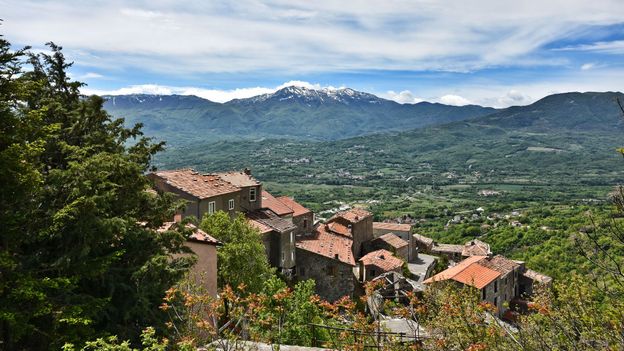
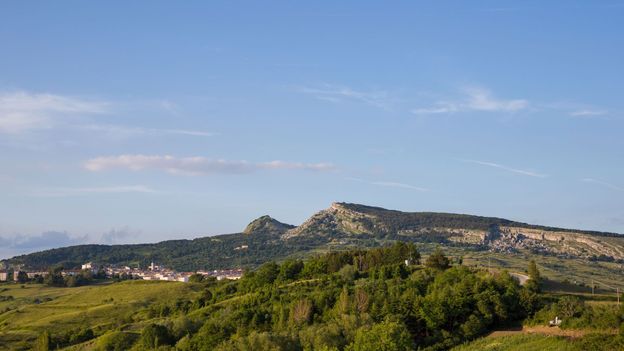

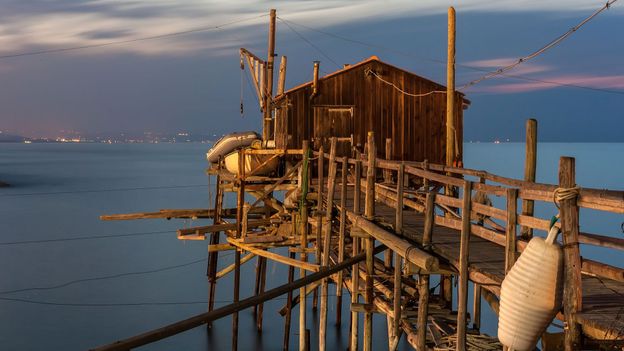
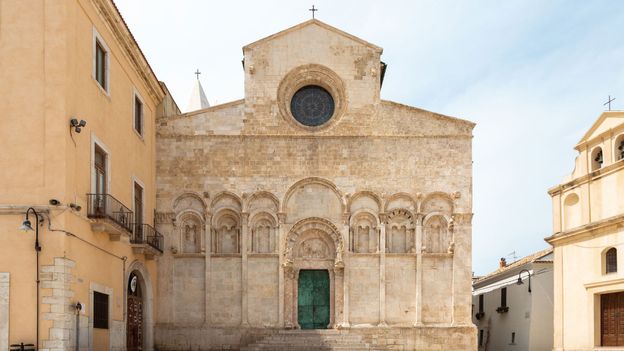
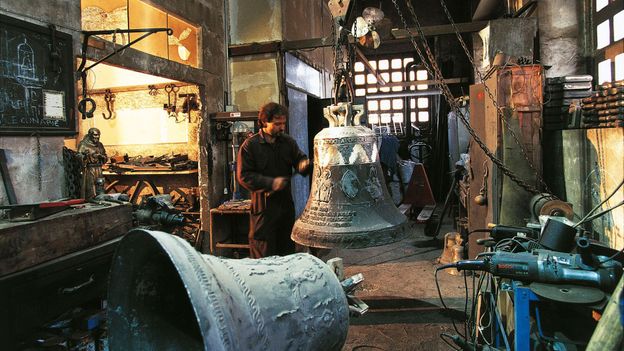
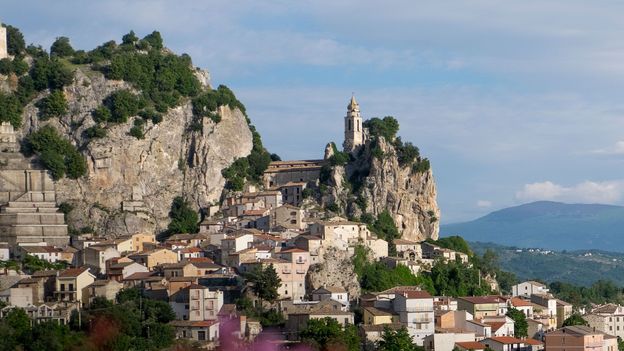
Comment